Recording Bach's The Art of Fugue, with Angela Hewitt
Philip Clark
Tuesday, April 18, 2017
Philip Clark meets the Canadian pianist at her home in north London to journey into the much misunderstood musical maze that is Bach’s The Art of Fugue
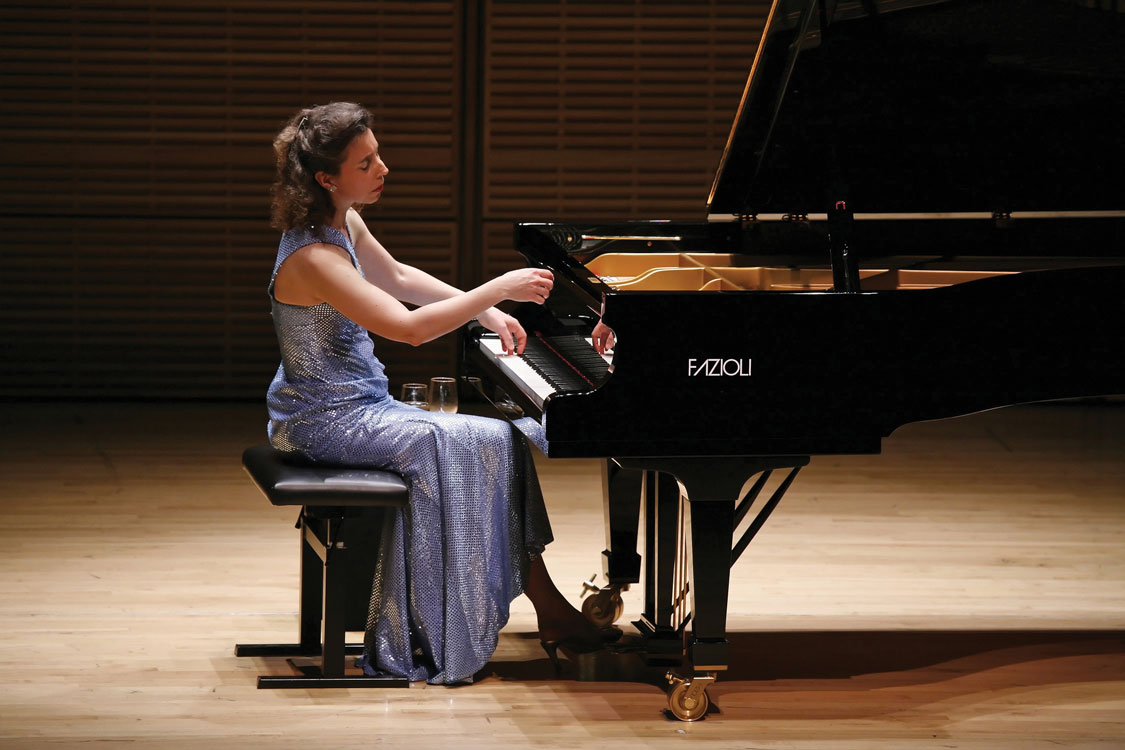
Twenty years after she began recording Johann Sebastian Bach’s complete music for keyboard, The Art of Fugue decided it was time to seek out Angela Hewitt. Foraging an existence as a 90-minute composition, incomplete and of uncertain instrumental allegiance, rooted in D minor throughout, and with latitude enough in the notation for an unthinking player to perform it with all the joy of shuffling data around a spreadsheet, can’t be easy. You see your sexier, leaner, more clubbable siblings like the Goldberg Variations and the Well-Tempered Clavier achieve the sort of place in people’s hearts that must remain for you forever a fantasy because, to be frank, you’re not even sure you are a composition. You read Hubert Parry, in his 1909 study of your composer Bach, writing you off as ‘a tantalising enigma not fit to be played as practical music’ and develop an understandable complex. You’ve been around for nearly 300 years and still nobody understands you! You’re talked about more than heard, the music lover’s congenital suspicion of concept being prioritised over music proving insurmountable. File under Vexations by Erik Satie and Structures by Pierre Boulez.
And even when you do manage to snare Hewitt’s imagination, what does she do? In The Guardian, she picks on you, writing in 2012 about how you ‘never seemed to grab me in the same way as the rest of Bach’s music, on first hearing. Could it be that, at the end of his life, Bach had finally written something boring?’ And sitting in Hewitt’s Belsize Park flat ready to talk, that statement gives me my ‘in’.
When the email arrives from her label Hyperion confirming our interview, the discovery that Hewitt lives in Belsize Park comes as no surprise. The place is pure pianist nirvana. Up the hill, in the general direction of Hampstead, live Alfred Brendel and Stephen Kovacevich, while down the hill, in St John’s Wood, is the domain of Stephen Hough. Katharina Wolpe, the émigré Austrian pianist who died last year, lived for 40 years on Well Walk, which borders Hampstead Heath, while a blue plaque proudly slapped against a residence on a side road leading off Fitzjohn’s Avenue takes you to Tobias Matthay’s front door. Arriving in Belsize Park, I notice Liam Gallagher extracting a loaf of cash out of an ATM and I’m guessing that he must know his way around a piano, too. Mobile phones and coffee on demand, that classic chain-store pincer movement, is in danger of tipping this community further towards anywheresville. But this North London neighbourhood also feels stubbornly rooted and grateful for its cultural heritage. Once home to Keats, Orwell and Freud, you can see why classical pianists want to adopt it as home.
An itch in the fingers, an awareness in the soul: ‘Die Kunst der Fuge is one magnificent, hair-raising fugue after the other,’ Hewitt tells me. Why her suggestion, then, that Bach might have written something boring? ‘Because it’s true! Lots of Bach can be boring in the wrong hands, but more so The Art of Fugue, because, unlike the Well-Tempered Clavier, there are no preludes to provide comic relief. I’ve proposed it to concert promoters who I suspect have had bad experiences and don’t want to programme it again. You have to work hard at finding ways of making it come alive.’
And that work, on disc, to bring Bach’s interweaving lines to life has a history that stretches back to 1934. The American pianist Richard Buhlig, the man who persuaded John Cage to study with Arnold Schoenberg, cuts the first recording and unwittingly starts a trend. Charles Rosen, Yuji Takahashi and Pierre-Laurent Aimard – pianists versed in Boulez, Xenakis and Carter – find The Art of Fugue resonating with their modern composition instincts: a score posing questions and requiring decrypting before it can be interpreted.
Why did Bach originally notate his fugues on four staves – one stave, one voice? What to do about music that ends before the piece? Leave Bach’s extraordinary valedictory unfinished fugue hanging? Or find another solution? Ought The Art of Fugue to be realised on piano, harpsichord or organ? Hermann Scherchen, Kurt Münchinger and Rinaldo Alessandrini opted to give it an orchestral life; Reinhard Goebel and Musica Antiqua Köln (6/85) treat each fugue with a shifting combination of instrumental colours. In 2002 early music group Fretwork recorded their version for viol consort (12/02); Slovenian avant-rock group Laibach, on their 2008 album ‘Laibachkunstderfuge’, played the notes with an intensity of purpose that, in live performance, shares space with a fugue of rotating, interlocking audiovisual patterns. Looking through my Edition Peters score while travelling to Belsize Park by tube, Carl Czerny’s editorially grim determination to transform Bach’s speculative masterwork into something concretely ‘piano-y’, each phrasing and dynamic neatly marked in, feels like a disappointing betrayal. Practical musicians, of course, need their practical solutions, but then my eye catches the London Underground map, a true functioning dilemma, a network of enlaced lines overlaid on top of the original 1931 map design created by genius draughtsman Harry Beck. Getting the true measure of The Art of Fugue, its interconnected junctions and far-flung boundaries and sheer physical presence, is similarly beyond our reach. Its systems and the magnitude of its scale remain necessarily insolvable, no matter how deeply and often you travel.
‘I don’t think of it as piano music,’ Hewitt asserts, and I’m reassured. ‘I feel, especially during the slow fugues, that it’s vocal music. I’d love to hear No 1 and 10 sung beautifully – and that’s what I try to do with each line. With some of the fugues, when I was beginning to work on them, I sang every voice in the tempo I wanted to play them at, and then marked in the breath. I’m not thinking of the piano, but the instrument allows me to imitate the human voice and, elsewhere, an organ; an oboe; an orchestra. The range of dynamics I can achieve is terrific. Some of the fugues sound very effective on the harpsichord. Bach designed the pieces with contrasting countersubjects. He does things with the spacing of voicings that are intelligible on a monochrome instrument. But on a piano you’re actually able to distinguish different voices – the piano can make this music sing.’
The argument persists, though, that the piano – and especially the equally tempered modern grand – makes Bach’s music sing in a way that he never intended. Harpsichords pluck strings; pianos hammer them. ‘But this is why the piano was invented,’ Hewitt counters. ‘In his last years he tried the fortepiano and became very interested in it and The Musical Offering was written with the instrument in mind. A keyboard instrument that could properly sing? He’d have loved that. I don’t buy the argument that you must play Bach’s music on the instrument it was written for.’ But what about Trevor Pinnock’s unavoidably brilliant 1979 recording of the Goldberg Variations, where compositional nuts-and-bolts, tuning and keyboard mechanism are all heard singing from the same hymn sheet? ‘He makes it come alive, great, but that doesn’t mean that the piano can’t offer other possibilities. Couperin wrote dedicated harpsichord music; Scarlatti’s music demands that harpsichords clang. But Bach remade violin concertos as keyboard concertos – and then the same material turns up vocally. His music had a different relationship to ideas of instrumentation.’
Reinhard Goebel has thrown doubt (and relished doing so) on everyone’s assumption that The Art of Fugue is a keyboard work. Bach’s interweaving lines, he says, demand leaps that are beyond the possible. ‘Well, I’ve proved him wrong – so there!’ comes Hewitt’s instantaneous reply. ‘It is true that some chords need to be broken and, for instance, at the end of No 6, I hold the pedal point on the middle pedal; but CPE Bach wrote that everything in it was made to be played on a keyboard and that it was possible. The fact it was written in open score was not unusual. For very complicated, contrapuntal music, to make the voices clear for people studying it, that was the norm. I read somewhere that if you wrote out fugues by Mendelssohn and Beethoven in the same way, as great as they are, the voice leading is never as it is in Bach. There isn’t a single point in Bach where a voice gets lost or doesn’t finish well.’
Thinking about structure, I ask whether there’s a temptation to fixate on individual points of contrapuntal engineering that seem remarkable in themselves, thereby forgetting that each of those moments must also fit into the whole fugue – and that each fugue is itself part of Bach’s overarching 90-minute construct? ‘Bach would have been thrilled but amazed at the idea of anyone playing The Art of Fugue all at once,’ Hewitt says. ‘In his analysis, Donald Tovey points out that the original version of No 2 ends in the dominant. But you can’t end there of course and that is a pretty big clue that Bach saw at least some of them in sequence.’ Are there particular markers throughout the set – points of arrival and take-off – that need to be observed? ‘In the Well-Tempered Clavier, Bach is obviously thinking in groups of four and here, likewise, the first four fugues make a very satisfying group. There are no complicated games. He inverts the subject and that’s about it – no stretto [simultaneously heard superimposed versions of the fugue’s subject] or augmentation [note values lengthened] or diminution [note values compressed]. In No 5 we hear the first stretto; Nos 8, 9, 10 and 11 are double and triple fugues; Nos 12 and 13 are mirror fugues [an inverted reflection of a fugue heard running against the thing itself]. And when you play the piece as a whole, the challenge is to find the character of each fugue and bring that out. Bach gives it to you, it’s there, but identifying it requires a great deal of hard work.’
We talk about the conditions under which Bach created The Art of Fugue, nearing the end of his life and with his health deteriorating. It’s easy to forget, I say, that in the Leipzig of the early- to mid-1700s no concept existed of a concert – an event for which people bought tickets to hear performers play abstract chamber music. It takes a leap of imagination to empathise with a culture of music-making so radically different from our own. The disconnect between then and now is even deeper, Hewitt suggests: musicians were trained as composers, improvisers and interpreters, different aspects of the same craft. When Bach was called to the court of Frederick the Great, improvisation was the order of the day. An evening of ‘greatest hits’ – a French Suite followed by Partita No 4 – would have been an anathema: who wants to hear old music? Bach would have created on the spot. His cantatas were for church; his secular cantatas were performed in Zimmermann’s Coffee House. But Bach’s keyboard music was essentially his private compositional realm, a space to explore and experiment. No one was listening. He could do what he liked – 90 minutes of D minor included.
Composers dreaming up crazy concepts. Scores calculated as much as composed. The ivory tower mentality might not be such a bad thing after all. The Art of Fugue raises issues normally considered more pertinent to the music of Xenakis or Ferneyhough. Hewitt has discussed stretto, mirror fugues, augmentation and diminution – but how acutely are listeners supposed to hear these hairline mathematical relationships? ‘I can’t say I understand the mathematics, especially in the mirror fugues, but then again who does?’ Hewitt explains. ‘Look, The Art of Fugue was never a bestseller – the first edition sold 30 copies. But when I play it live I begin with a talk. I give audiences something to listen out for in each fugue.
‘Success in performance all comes down to the clarity you can bring to the voices. Ninety-five per cent of the work involved in learning the piece is figuring out the fingering; without intelligent fingering you’re lost. When I do masterclasses I tell pianists to learn four-part fugues in five ways – once bringing out only the soprano, once bringing only the alto, once the tenor, once the bass. Only then are you ready to work towards a fifth balance, which is what you will play in the end, balancing the parts according to what you want to hear, not just bringing out one voice. And then you must think about tempo. Nos 10 and 11 have strikingly similar subjects. Both begin with a rest on the first beat and have a similar style – and so you can’t play them at the same tempo or mood. You have to make bold decisions.’
And those decisions can hurt. Her massage therapist knows when she’s been playing only Bach, Hewitt laughs. Liszt, throwing octaves around, is about aerobics, but Bach is about control, she says. ‘It’s rather like sitting there for an hour-and-a-half chanting “Peter Piper picked a peck of pickled peppers” and hoping that you won’t stumble,’ she says. ‘The music all lies within a restricted range and there is no room for extraneous movement. You train the fingers but it’s all brainwork. We’re distracted by a million thoughts a second. When people cough during the performance it’s a disaster, and I know that if I catch myself thinking of something else that’s when I can go wrong. If you use the third finger instead of the fourth, it can all unravel.’
Given the unique set of challenges The Art of Fugue presents, I wondered if earlier recordings helped Hewitt find her point of entry? ‘I didn’t listen much, especially at the beginning, because I really wanted to find my own way through the score, working it out for myself. I didn’t even read an analysis at first and when I did read Tovey I was amused to see that he recommends performers do precisely that. It’s thrilling to find that No 11 is No 8 with the three subjects turned upside down. I listened to bits of recordings. I especially admired Alessandrini and his Baroque orchestra. He uses tempos very intelligently and there is a very nice flow for each fugue that highlights their different characters. Some of the others that I heard played on keyboard, whether piano or harpsichord, didn’t say much to me. I appreciated Glenn Gould playing No 1 at the slowest tempo you could ever imagine, and The Swingle Singers performing No 9. But otherwise I choose not to listen too carefully; it has to come from the score otherwise there’s a danger you end up with a mish-mash of everybody else.’
As we bring our own chattering lines to a close, Hewitt reveals that her life with Bach is not quite over yet. She’s learnt the Ricercar and Trio Sonata from The Musical Offering, and would like to re-record the Goldberg Variations; there are also various flute and violin sonatas to be mopped up. But next on her agenda is Scarlatti and various pieces by Liszt, including the B minor Sonata. They’ve sought Angela Hewitt out too. The word is out: she’s unpicked The Art of Fugue and now they all want to take a trip up the Northern Line to Belsize Park.
Hewitt plays Bach
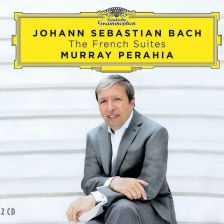
French Suites
Angela Hewitt pf
Hyperion
‘Even the most out-and-out purists who blanch at the thought of Bach on so alien an instrument will find it hard not to be won over by Angela Hewitt’s artistry.’ (Lionel Salter)
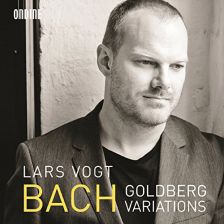
Goldberg Variations
Angela Hewitt pf
Hyperion
‘Her mastery of the keyboard is exemplary. In my view she has never made a better CD. Strongly recommended.’ (Rob Cowan)
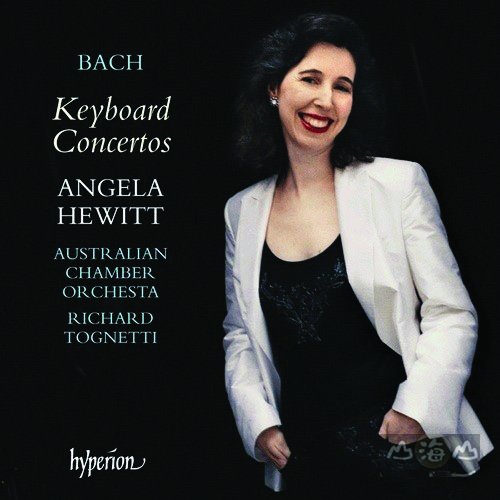
Keyboard Concertos
Angela Hewitt pf Australian Chamber Orch / Richard Tognetti
Hyperion
‘Interpretative decisions are intelligently applied; and Hewitt is at her best in the slow movements, all of which are played with the finest sensibility.’ (Nalen Anthoni)
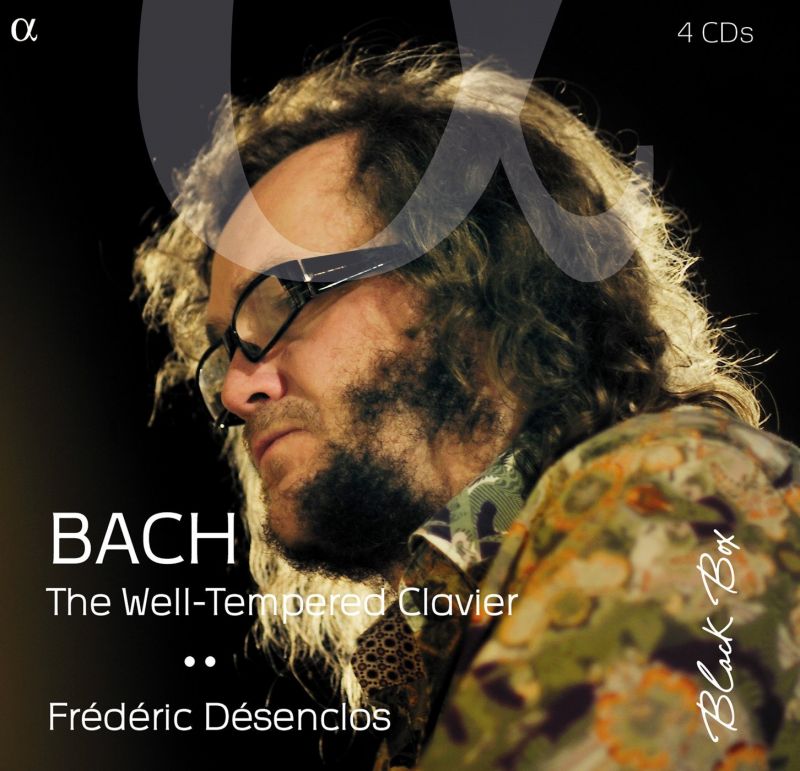
Well-Tempered Clavier, Books 1 & 2
Angela Hewitt pf
Hyperion
‘Her interpretations haven’t changed so much as evolved, intensified and, most important, internalised.’ (Jed Distler)











